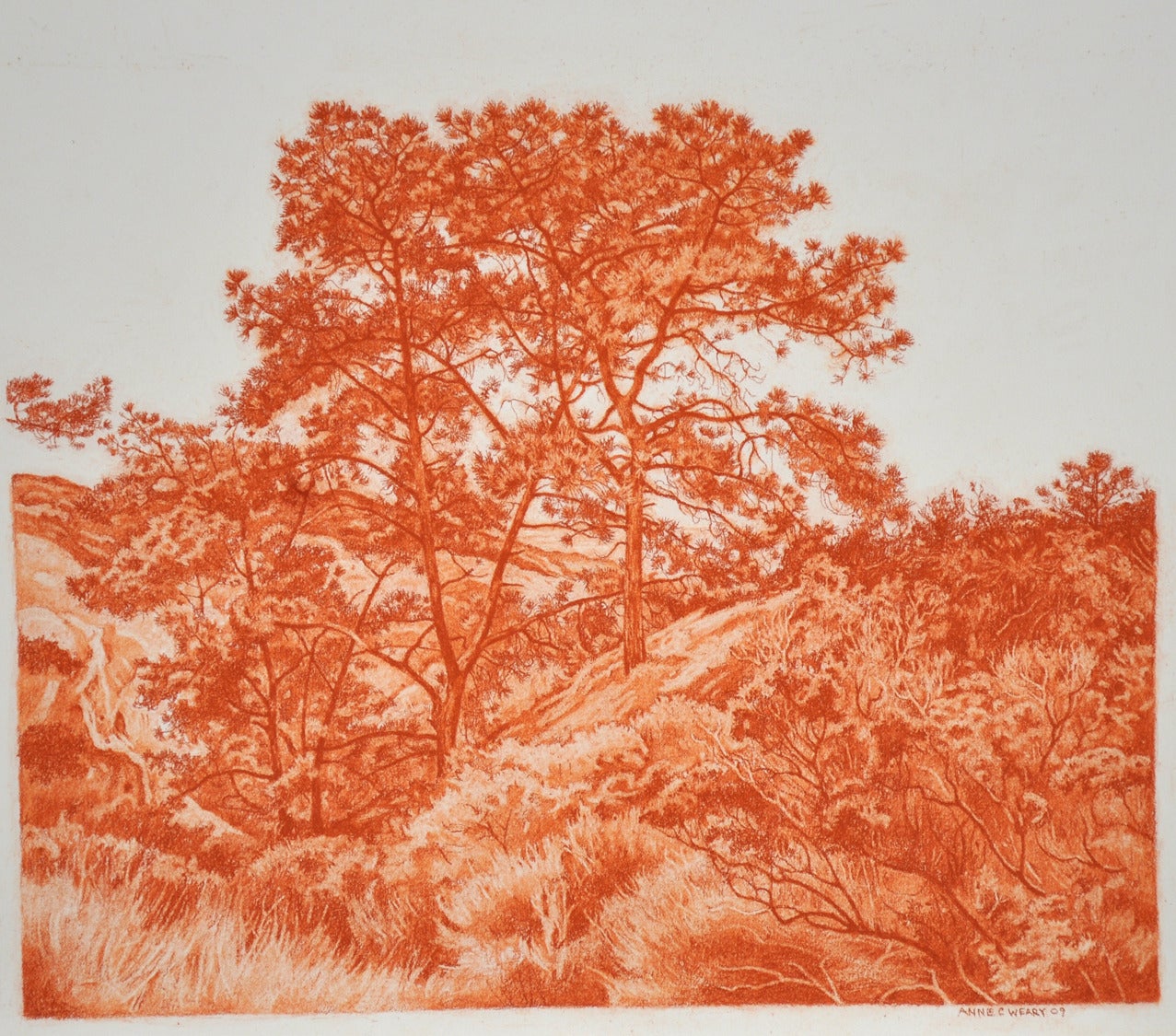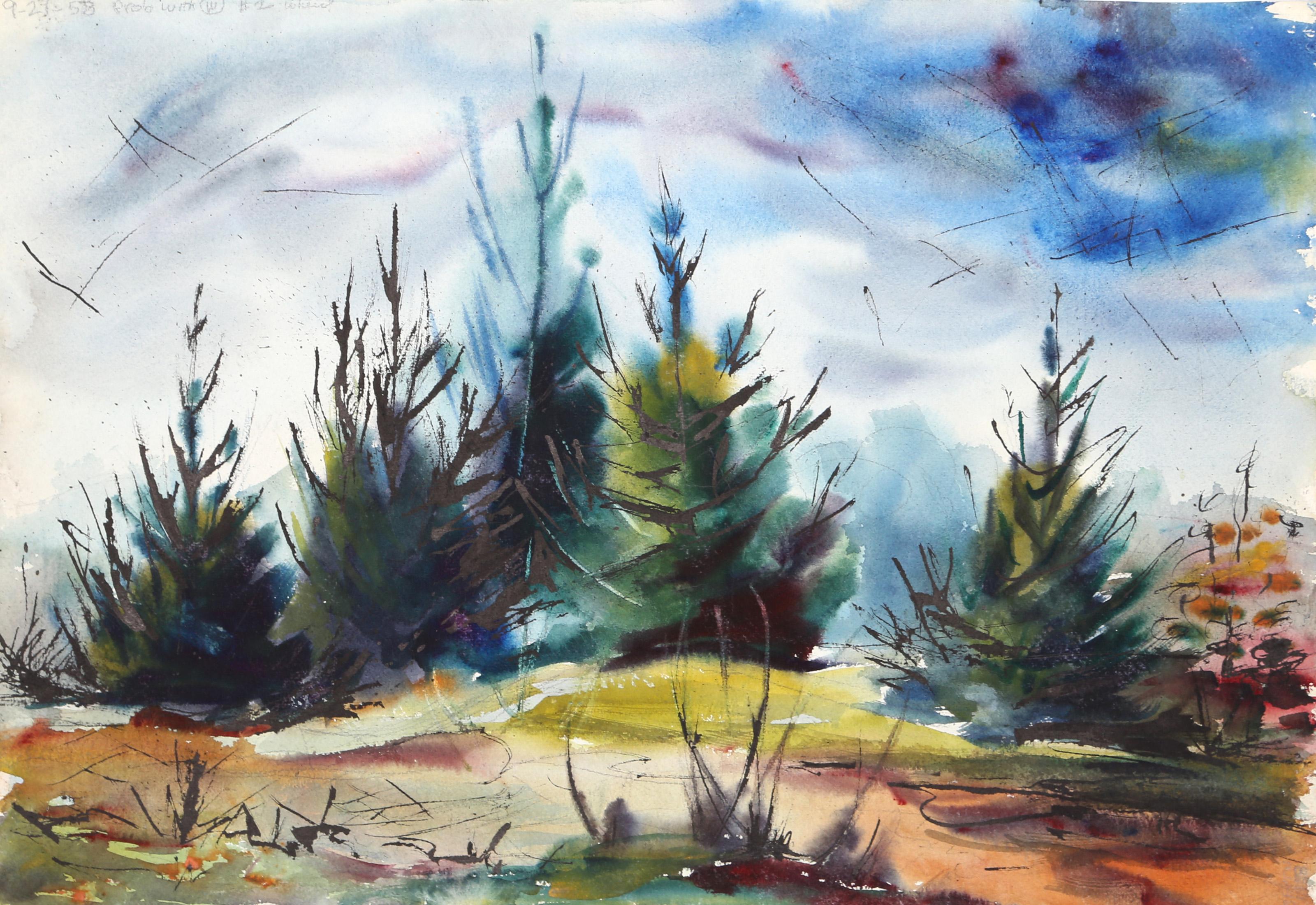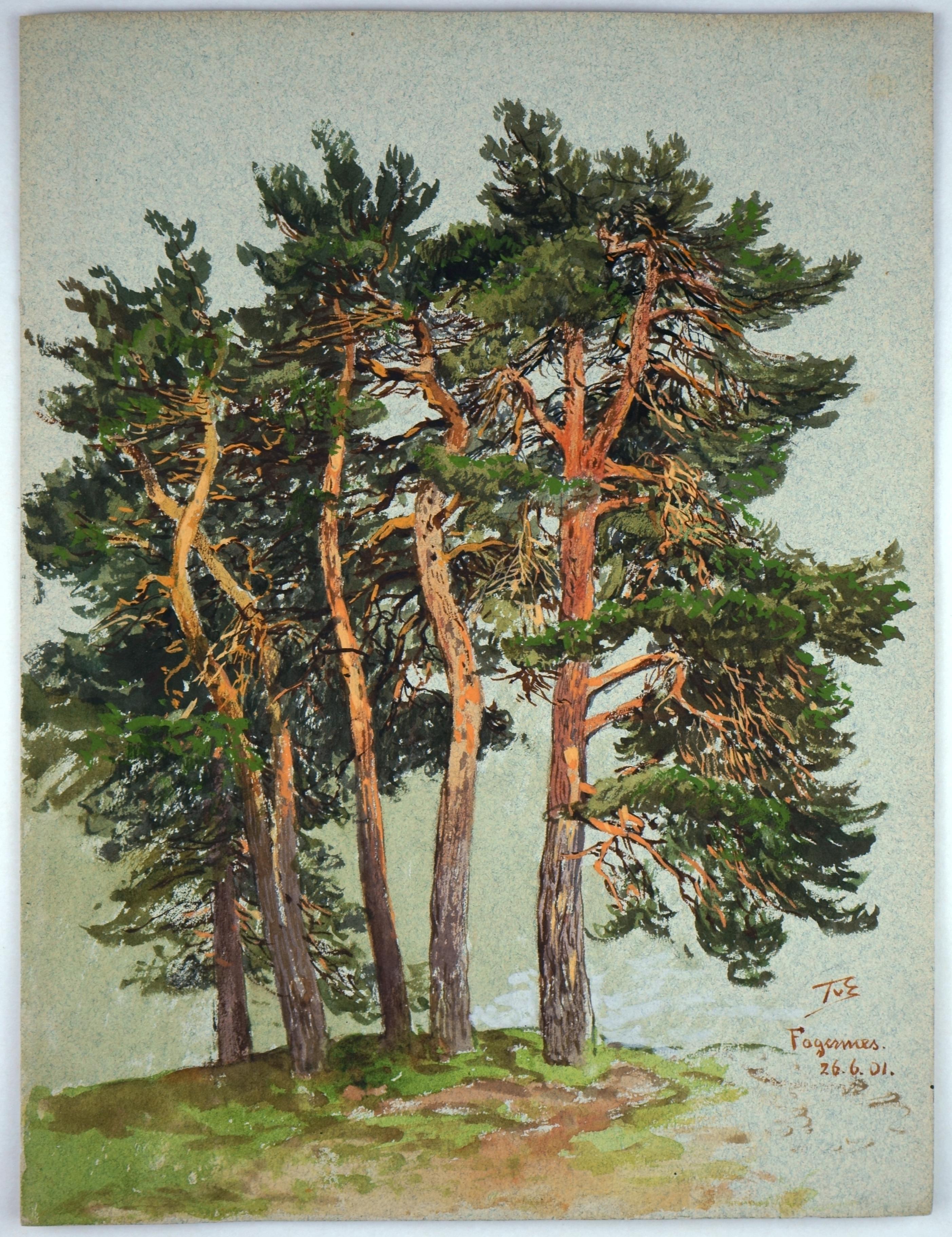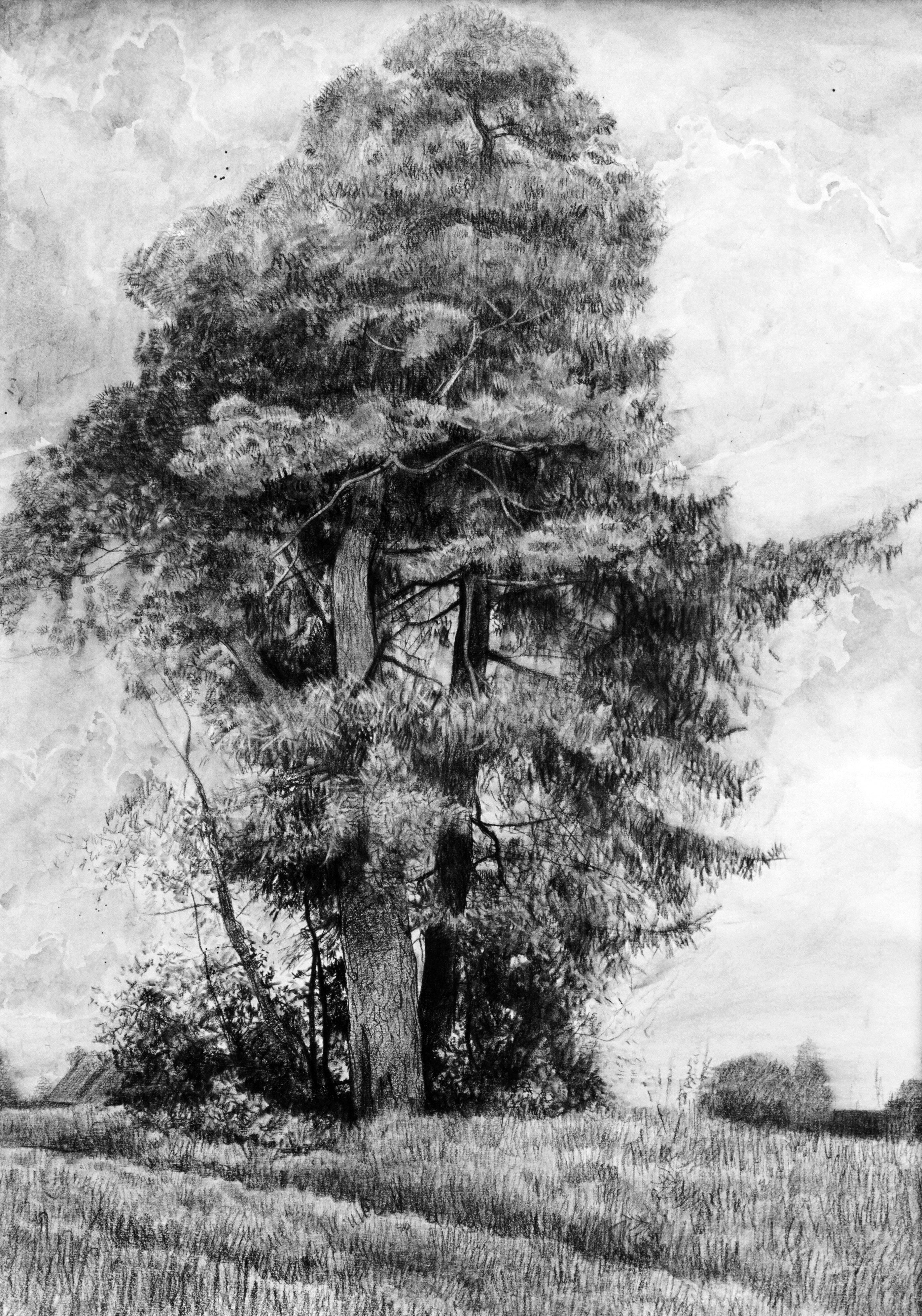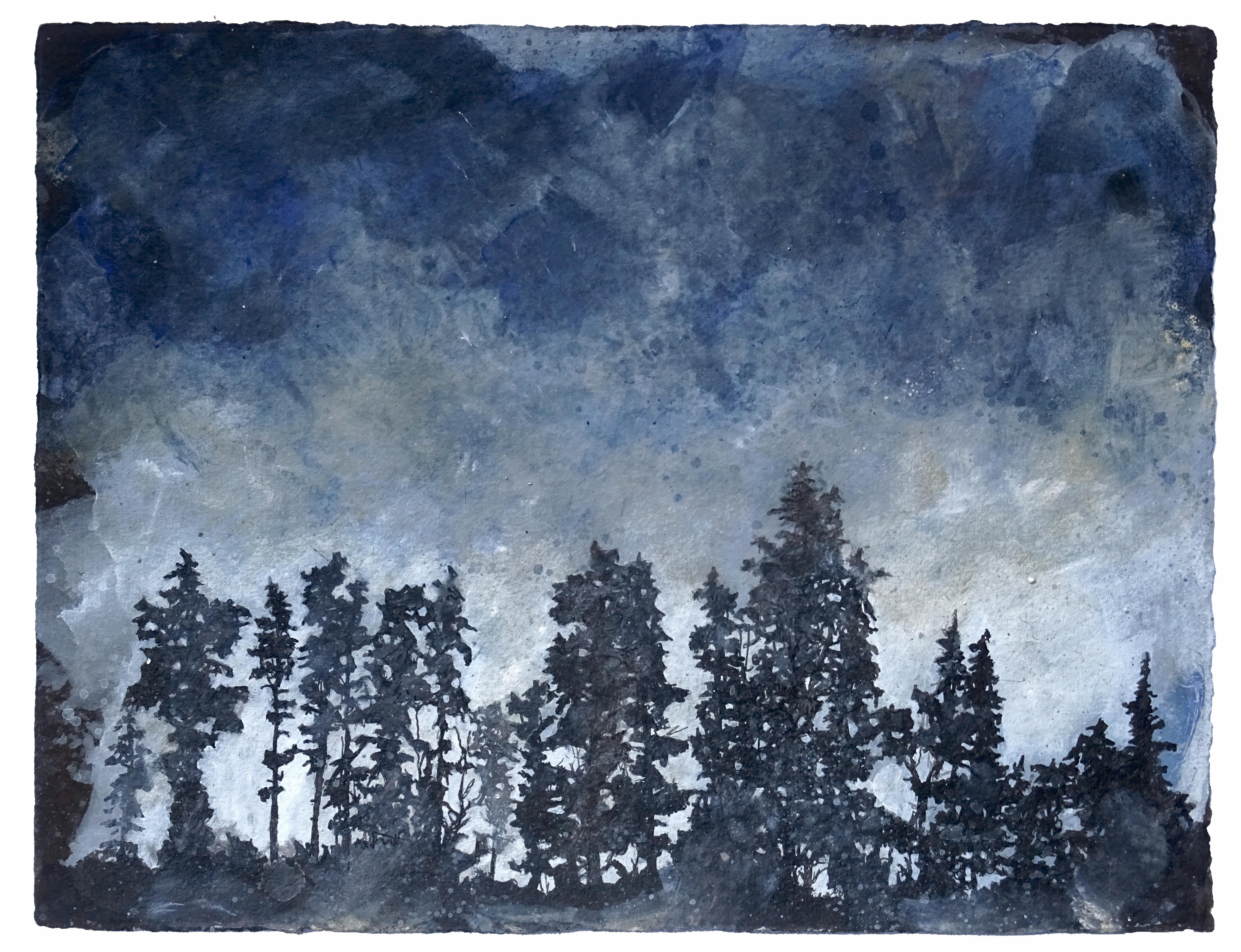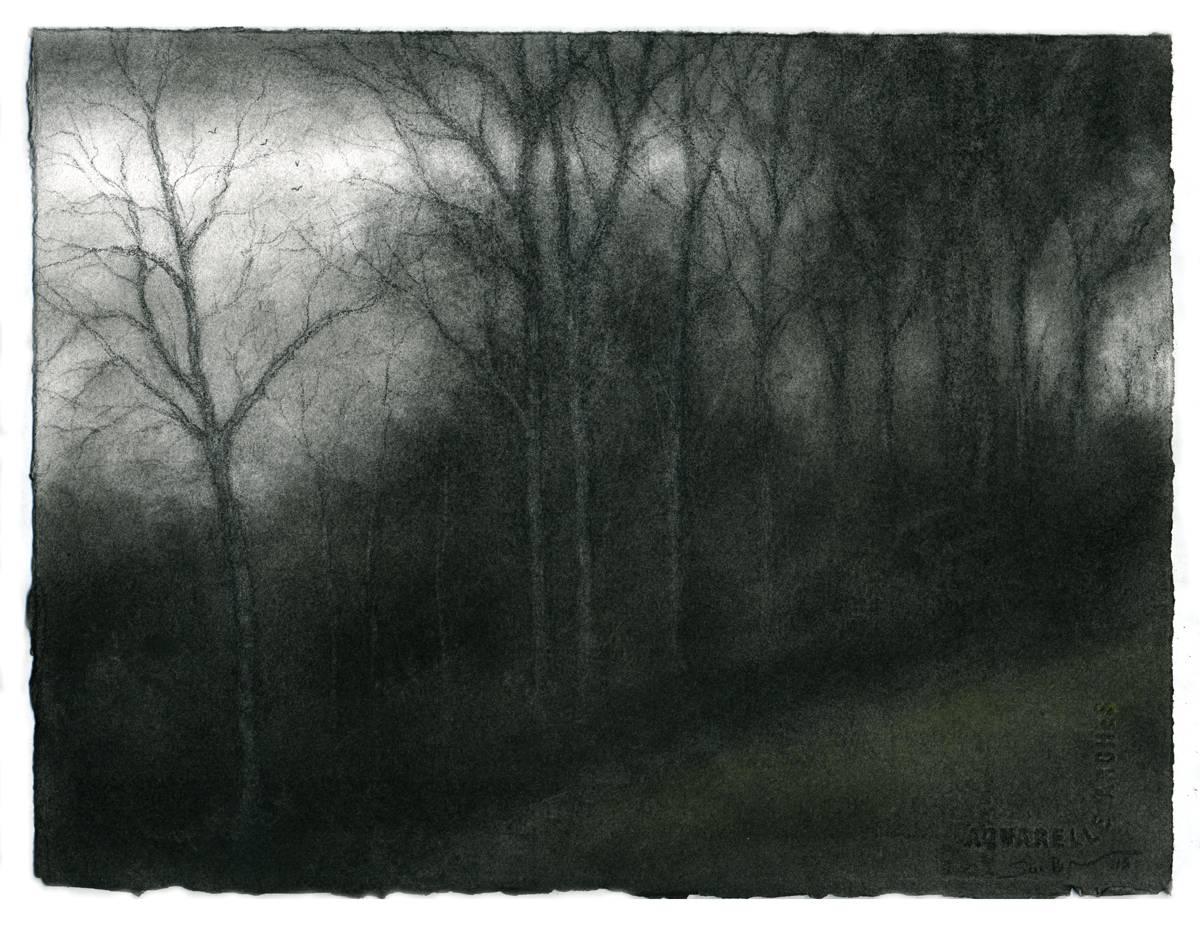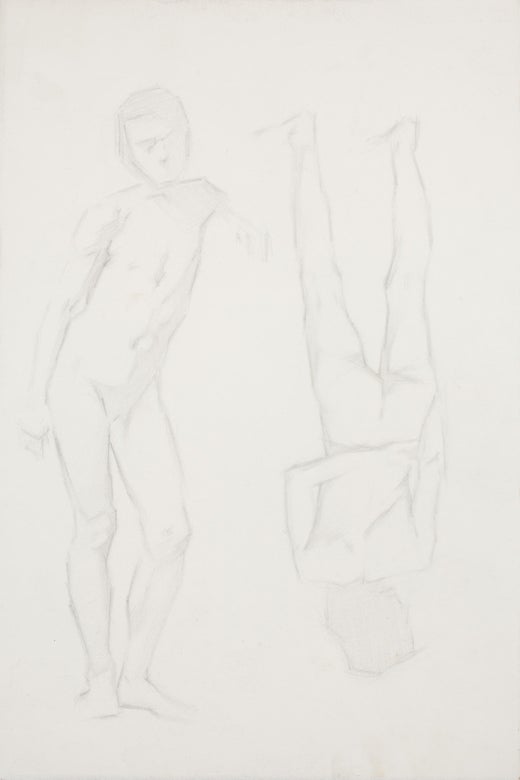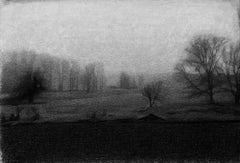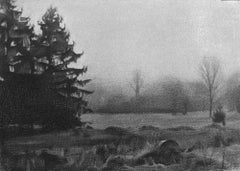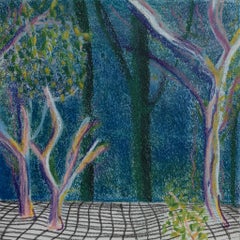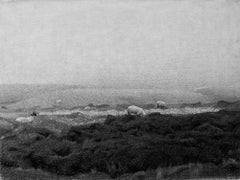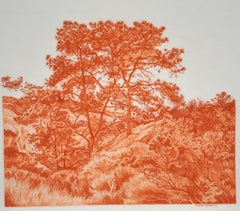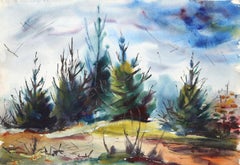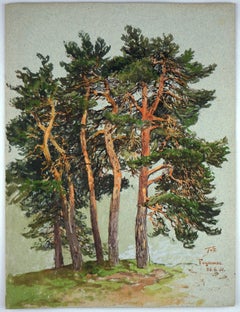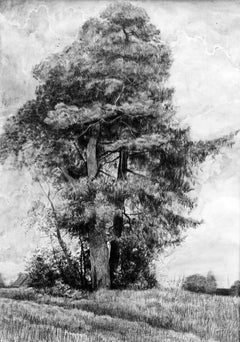Items Similar to Ilkley Moor Pines
Want more images or videos?
Request additional images or videos from the seller
1 of 2
Jessica KeiserIlkley Moor Pinesc. 2020
c. 2020
$600
£455.51
€521.01
CA$838.29
A$932.36
CHF 486.85
MX$11,345.81
NOK 6,217.80
SEK 5,831.20
DKK 3,888.47
Shipping
Retrieving quote...The 1stDibs Promise:
Authenticity Guarantee,
Money-Back Guarantee,
24-Hour Cancellation
About the Item
Charcoal on paper
9 x 12 inches
- Creator:Jessica Keiser (1990, American)
- Creation Year:c. 2020
- Dimensions:Height: 12 in (30.48 cm)Width: 9 in (22.86 cm)
- Medium:
- Period:
- Condition:
- Gallery Location:Columbia, MO
- Reference Number:1stDibs: LU1976212665692
Jessica Keiser (born 1990) currently resides in New Haven, Connecticut. Her style is naturalistic, focused on the intimacy of portrait creation, and stands in contrast to modernist art, as her work is deeply rooted in traditional techniques without irony or commentary. Keiser's expertly rendered portraits reveal the inaccessible and enigmatic aspects of the interior lives of her subjects. This invites viewers to assign narratives or personas to them, creating an alluring and emotionally evocative illusion. Her artistic process involves extensive observation and methodical recording, resulting in a profound homage to her subjects. Keiser studied drawing and painting at the Florence Academy of Art and briefly at the University of Missouri, Columbia.
About the Seller
No Reviews Yet
Vetted Professional Seller
Every seller passes strict standards for authenticity and reliability
1stDibs seller since 2022
43 sales on 1stDibs
Typical response time: 16 hours
- ShippingRetrieving quote...Shipping from: Columbia, MO
- Return Policy
Authenticity Guarantee
In the unlikely event there’s an issue with an item’s authenticity, contact us within 1 year for a full refund. DetailsMoney-Back Guarantee
If your item is not as described, is damaged in transit, or does not arrive, contact us within 7 days for a full refund. Details24-Hour Cancellation
You have a 24-hour grace period in which to reconsider your purchase, with no questions asked.Vetted Professional Sellers
Our world-class sellers must adhere to strict standards for service and quality, maintaining the integrity of our listings.Price-Match Guarantee
If you find that a seller listed the same item for a lower price elsewhere, we’ll match it.Trusted Global Delivery
Our best-in-class carrier network provides specialized shipping options worldwide, including custom delivery.More From This Seller
View AllSouth Hill Field
Located in Columbia, MO
Charcoal on paper
9 x 12 inches
Category
21st Century and Contemporary Still-life Drawings and Watercolors
Materials
Charcoal
South Hill Hay Bale
Located in Columbia, MO
Charcoal on paper
9 x 12 inches
Category
21st Century and Contemporary Still-life Drawings and Watercolors
Materials
Charcoal
Green Landscape
Located in Columbia, MO
Green Landscape
Pastels
2023
8.5 x 8.5
Category
21st Century and Contemporary Contemporary Landscape Drawings and Waterc...
Materials
Pastel
Cup and Ring
Located in Columbia, MO
Charcoal on paper
9 x 12 inches
Category
21st Century and Contemporary Still-life Drawings and Watercolors
Materials
Charcoal
Beaver Meadow Estes Park Colorado
Located in Columbia, MO
The central Missouri, river-view studio of painter Gloria Gaus offers her contemplative solitude and direct access to the Midwestern landscapes featured throughout her body of work. ...
Category
21st Century and Contemporary Naturalistic Landscape Paintings
Materials
Oil
Blue Landscape
Located in Columbia, MO
Blue Landscape
Pastels
2023
8.5 x 8.5
Category
21st Century and Contemporary Contemporary Landscape Drawings and Waterc...
Materials
Pastel
You May Also Like
Pines in Ravine
By Anne C. Weary
Located in Dallas, TX
“Anne Weary, who grew up as a Texas cowgirl, is at home in the outdoors and knows its ways and its language. There is a sort of very quiet but very powerful mysticism in her work, a sense of presence that goes quite beyond words,” wrote poet and University of Texas at Dallas professor Frederick Turner in the American Arts Quarterly.
Dallas born Weary studied under Olin Travis, Octavio Medellin and Chapman Kelley before earning a 4 year certificate from the Pennsylvania Academy of Fine Arts with awards for excellence in drawing. In 2008, Weary left Texas for a three year sabbatical in Southern California where she began drawing in Torrey Pines State Natural Reserve with red conté...
Category
21st Century and Contemporary Contemporary Landscape Drawings and Waterc...
Materials
Conté, Paper
Pines, Impressionist Watercolor by Eve Nethercott
By Eve Nethercott
Located in Long Island City, NY
Eve Nethercott, American (1925 - 2015) - Pines (P5.33), Year: 1958, Medium: Watercolor on Paper, Size: 15 x 21.5 in. (38.1 x 54.61 cm), Description: Scattered over the rollin...
Category
1950s Impressionist Landscape Drawings and Watercolors
Materials
Watercolor
Norwegian Pine Grove - The inner glow of the trees -
Located in Berlin, DE
Themistokles von Eckenbrecher (1842 Athens - 1921 Goslar), Norwegian pine grove, 1901. Watercolor on blue-green paper, 30 x 22 cm. Signed, dated and inscribed in his own hand "TvE. Fagermes [i.e. Fagermes]. 26.6.[19]01."
- Slight crease throughout at left margin, otherwise in good condition.
About the artwork
Themistokles von Eckenbrecher often traveled to Norway to study the nature that fascinated him there. On June 26, 1901, near the southern Norwegian town of Fagernes, in the summer evening sun, he saw a small pine grove, which he immediately captured in a watercolor. He exposed the trees growing on a small hill in front of the background, so that the pines completely define the picture and combine to form a tense motif. The tension comes from the contrast of form and color. The trunks, growing upward, form a vertical structure that is horizontally penetrated by the spreading branches and the pine needles, which are rendered as a plane. This structural tension is further intensified by the color contrast between the brown-reddish iridescent trunks and branches and the green-toned needlework.
Themistokles von Eckenbrecher, however, does not use the observed natural scene as an inspiring model for a dance of color and form that detaches itself from the motif and thus treads the path of abstracting modernism. Its inner vitality is to be brought to light and made aesthetically accessible through the work of art.
It is precisely in order to depict the inner vitality of nature that von Eckenbrecher chooses the technique of watercolor, in which the individual details, such as the needles, are not meticulously worked out, but rather a flowing movement is created that unites the contrasts. The trees seem to have formed the twisted trunks out of their own inner strength as they grew, creatingthose tense lineations that the artist has put into the picture. The inner strength continues in the branches and twigs, culminating in the upward growth of the needles. At the same time, the trunks, illuminated by the setting sun, seem to glow from within, adding an almost dramatic dimension to the growing movement.
Through the artwork, nature itself is revealed as art. In order to make nature visible as art in the work, von Eckenbrecher exposes the group of trees so that they are bounded from the outside by an all-encompassing contour line and merge into an areal unity that enters into a figure-ground relationship with the blue-greenish watercolor paper. The figure-ground relationship emphasizes the ornamental quality of the natural work of art, which further enforces the artwork character of the group of trees.
With the presentation of Themistokles von Eckenbrecher's artistic idea and its realization, it has become clear that the present watercolor is not a study of nature in the sense of a visual note by the artist, which might then be integrated into a larger work context, but a completely independent work of art. This is why von Eckenbrecher signed the watercolor. In addition, it is marked with a place and a date, which confirms that this work of nature presented itself to him in exactly this way at this place at this time. At the same time, the date and place make it clear that the natural work of art has been transferred into the sphere of art and thus removed from the time of the place of nature.
About the artist
Themistocles' parents instilled a life of travel in their son, who is said to have spoken eleven languages. His father, who was interested in ancient and oriental culture, was a doctor and had married Francesca Magdalena Danelon, an Italian, daughter of the British consul in Trieste. During a stay in Athens - Gustav von Eckenbrecher was a friend of Heinrich von Schliemann and is said to have given him crucial clues as to the location of Troy - Themistokles saw the light of day in 1842.
After an interlude in Berlin, where Themistokles was educated at the English-American School, the journey began again. From 1850 to 1857 the family lived in Constantinople, after which the father opened a practice in Potsdam, where Themistokles, who wanted to become a painter, was taught by the court painter Carl Gustav Wegener.
In 1861 the von Eckenbrechers left Potsdam and settled in Düsseldorf. There Themistokles received two years of private tuition from Oswald Aschenbach, who greatly admired the talented young artist. After his artistic training, he undertook extensive travels, often accompanied by Prince Peter zu Sayn-Wittgenstein, which took him to northern and eastern Europe, but above all to the Middle East and even to South America. The paintings that resulted from these journeys established his artistic reputation and led to his participation in large panoramas such as the 118 x 15 metre Entry of the Mecca Caravan into Cairo, painted for the City of Hamburg in 1882.
1882 was also the start of a total of 21 study trips to Scandinavia, most of them to Norway, and the unique Norwegian landscape with its rugged fjords became a central motif in his work. Along with Anders Askevold and Adelsteen Normann...
Category
Early 1900s Naturalistic Landscape Drawings and Watercolors
Materials
Watercolor
$1,150 Sale Price
20% Off
Pine and Spruce
By Simon Kozhin
Located in Zofingen, AG
Pine and spruce stand in the field like a brother and sister steadily enduring bad weather. Not thunderstorms and not storms and not scorching heat, lute frosts do not separate them ...
Category
1990s Photorealist Landscape Drawings and Watercolors
Materials
Charcoal, Pencil
"The Cold Wind in the Pine Trees", Pigments Watercolor Acrylic Paper Drawing
By Frank Girard
Located in Clermont-Ferrand, Auvergne-Rhône-Alpes
Titled "The cold wind in the pine trees", this artwork created by Frank Girard, utilizes pigments, Chinese ink, watercolors, acrylics, and colored pencils on 400g/m2 neutral white pa...
Category
2010s Realist Figurative Drawings and Watercolors
Materials
Paper, Ink, Acrylic, Watercolor, Color Pencil, Pigment
$838 Sale Price
20% Off
Hillside, Hudson (Realistic Charcoal Landscape Drawing of Trees in a Forest)
By Sue Bryan
Located in Hudson, NY
Black and white landscape drawing of country forest with hints of green pastel
charcoal and carbon on Arches paper
8 x 10 inches un...
Category
2010s Modern Landscape Drawings and Watercolors
Materials
Carbon Pencil, Charcoal, Paper
